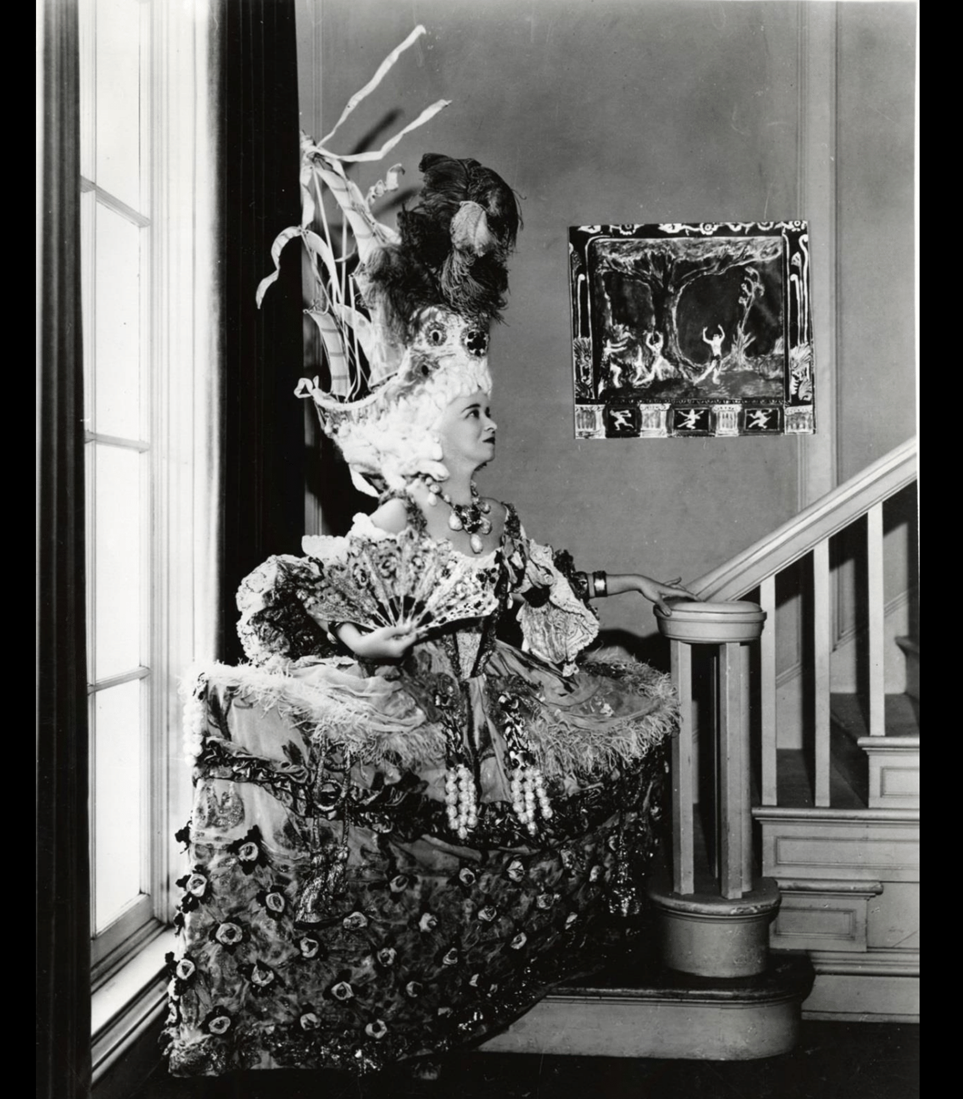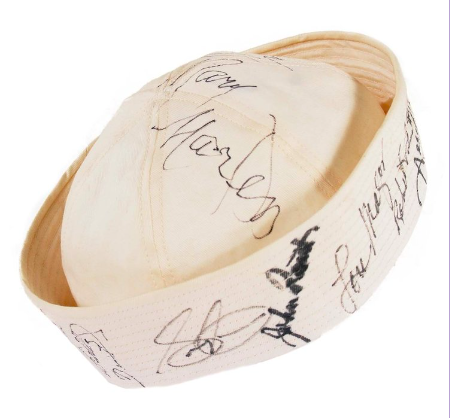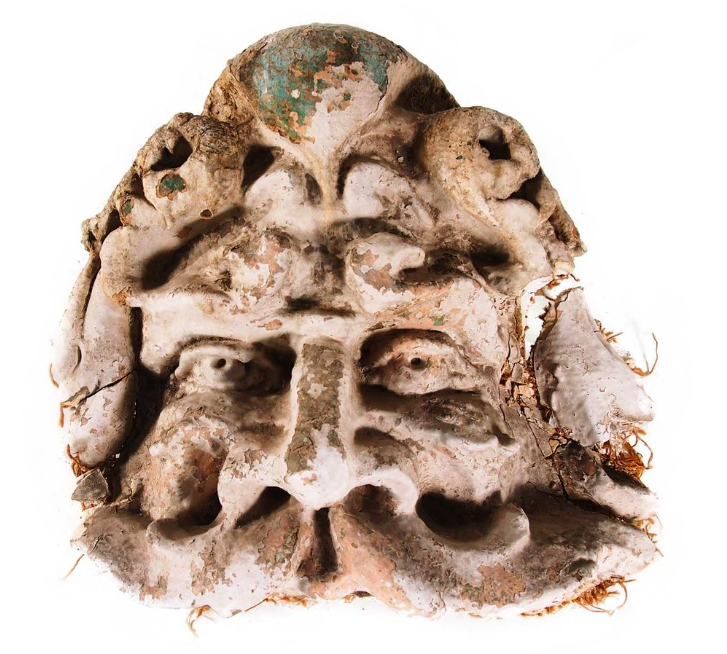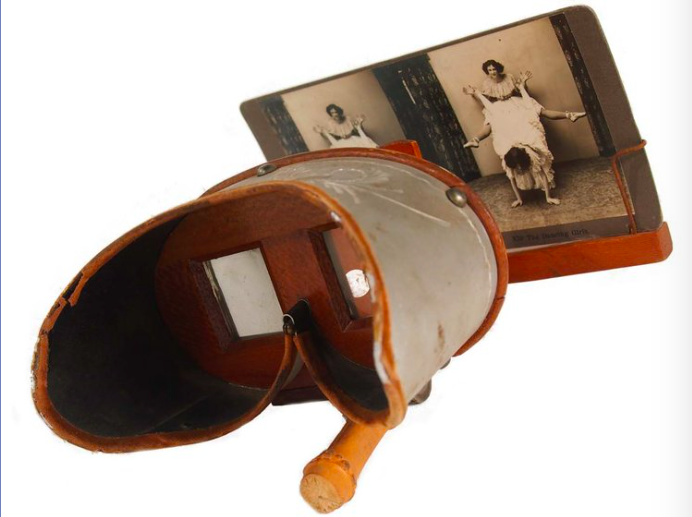
Collection Highlights
Preserving Bay Area history
For over 75 years, Museum of Performance + Design has been diligently collecting and preserving the history of the performing arts in the San Francisco Bay Area. With a vast collection of over 3.5 million items, we serve as a prominent living record that spans from the era of the Gold Rush to the present day, capturing the rich tapestry of the performing arts of San Francisco and beyond.
Under our dedicated guardianship of this vast collection, we aim to share artistic and humanistic values with the public. As the official archive for esteemed institutions such as the San Francisco Ballet, and the custodian of records for the San Francisco Opera, Stern Grove Festival, and the San Francisco Ethnic Dance Festival, we play a pivotal role in safeguarding and celebrating the legacy of these acclaimed organizations.
History of the Museum of Performance + Design
The Museum of Performance + Design was founded in 1947 by a gentleman named Russell Hartley who was a dancer and designer with the San Francisco Ballet. During it’s early years, the collection was housed in Mr. Hartley’s home and called the San Francisco Dance Archives. In 1975, the city librarian of San Francisco brought the collection to the Presidio Branch of the public library.
In 1983, shortly before Hartley’s passing, the collection moved to a space in the War Memorial Opera House. Having outgrown the opera house space, in 1989 the collection moved to the corner of Grove and Gough and became known as the San Francisco Performing Arts Library and Museum (SFPALM). In 1999, SFPALM relocated to the 4th floor of the Veteran’s Building and took on its current name.
Today MP+D maintains a 3.5 million item collection containing performing arts treasures from the Gold Rush to the present day. The collection contains historic photographs, press clippings, playbills, set and costume designs, archives and personal papers, fine art, costumes, artifacts, rare books, manuscripts, and audiovisual recordings.
Image 1: Founder Russell Hartley at his home with the collection, 1940s.
Image 2: The collection—now called the Archives for the Performing Arts— at the Presidio Branch of the public library, circa 1975.

Special
Collections
Chinese Opera
During the California Gold Rush, Chinese immigrants were not allowed to attend whites-only performance houses. This prompted them to carry on their own theatrical traditions by importing touring groups. The 123-member Tung Hook Tong Company performed the first Chinese Opera in 1852 at the American Theater. Men played both the male and female roles, and featured a traditional sampling of historical music and drama. While the traditions of Chinese theater were originally criticized and ridiculed by the press, the genre expanded during the late 19th century. Popularity grew for Chinese opera by westernizing some of the techniques, such as providing translated synopses of the scores, cutting out culturally objectionable scenes, and by introducing the final bow to performing groups.
The first permanent Chinese theater, the Hing Chuen Yuen Theater (translated as "Prosperous Complete Origin"), was opened on Jackson Street in 1868. It quickly became a center for cultural life to Chinese-Americans, as well as a popular tourist attraction.
Mei Lan-Fong on stage poses with water sleeves, 1930-39.
Digital Archive of Chinese Theater in California.
Mah See Don strikes heroic pose as a general at the Mandarin Theater, 1932.
Digital Archive of the Chinese Theater in California.
Fairy goddess portrayed by man on phoenix and flute player astride a lion, staged at the Great Star Theatre, 1920-29.
Digital Archive of Chinese Theater in California.
MP+D collection includes a 60,000 piece sheet music collection donated by collector Bob Johnson. His collection contains songs from films, stage shows and more than 20 other categories ranging from rock and pop to wars and world’s fairs.
Sheet Music
Musical Theater Recordings
3,000 original Broadway, London, revival, studio, film and television cast recordings
“Into the Woods” Original Broadcast Recording, Stephen Sondheim, 1987.
Photograph Collection
Photographs in the form of carte de visite, or small calling cards, were taken of prominent stage stars including Booth, Tetrazzini, and Crabtree. Much like our modern baseball cards, such photographs allowed audiences to take a bit of the performance home with them.
Luisa Tetrazzini
1871-1940
San Francisco's Tivoli Opera House was the site of this famed Italian soprano's American debut in 1905. After nearly fifteen years of appearances in Italy and South America, Tetrazzini was "suddenly" a major success after her San Francisco debut. During one of her triumphant appearances on Christmas Eve in 1910, an estimated 250,000 people gathered at Lotta's Fountain for a free concert where audience members joined her in a chorus of "Auld Lang Syne." She returned to San Francisco again in 1913 to inaugurate the new Tivoli Opera House, which was rebuilt after being destroyed by the 1906 earthquake.
Lotta Crabtree
1847-1924
A true child of the Gold Rush, Lotta Crabtree was raised in California's gold country and performed in San Francisco's vaudeville houses. She became the most popular comedienne of her era and the highest paid performer on the Broadway stage. Lotta's Fountain, an ornate drinking fountain which miraculously survived the Great Earthquake and Fire of 1906, still stands at Market near Kearny Streets in San Francisco: her gift to the city she always loved and returned to frequently.
Edwin Booth
1833-1893
Known as "The Prince of Players," Edwin Booth was the most famous Shakespearean actor of his time. He began his career in 1852 when he arrived in San Francisco with his actor father, Junius Brutus Booth, Sr. and brother, Junius Brutus, Jr. His career started with humble beginnings as a performer in vaudeville houses and minstrel shows, and he honed his acting craft in the mining camps of California's Gold Rush. Booth left San Francisco in 1856 to pursue a career in the east and returned a famous actor. Edwin Booth was the brother of John Wilkes Booth, also a notable actor, but notorious as the assassin of President Abraham Lincoln.
Photograph, 1910. On Christmas Eve, 1910, Tetrazzini gave a free outdoor concert at Lotta’s Fountain before a reported crowd of 250,000.
Legacy Oral History
Legacy oral histories record and preserve the artistic legacies of San Francisco Bay Area performing arts community members who are at-risk. They are full-life histories with an emphasis on the narrator's personal experience as it relates to the performing arts.
Thanks to a generous grant from the California State Library through the Library Services & Technology Act, the Museum of Performance + Design digitized many of its Legacy audio recordings. Legacy's senior editors chose representatives from dance, music, and theater, gay and lesbian artists, high culture artists, artists representing community-based organizations and more cutting edge art forms to be featured in the online collection. The selection of narrators is gender considerate and ethnically diverse. The Collection features men and women of African, Haitian, Cambodian, Jewish, Spanish, Russian and other heritages.
Maclovia Ruiz
1910-2005
Ruiz was born in Guadalajara, Mexico in 1910. Maclovia’s six-decade career in dance spanned multiple dance forms and genres, such as interpretive dance with the San Francisco-based Peters Wright School to folk and classical Spanish dances learned from her father and in various immigrant social clubs in early twentieth century North Beach.
Maclovia also performed in ballroom dance clubs in Hollywood and New York City, in numerous early films, classical ballet roles for George Balanchine’s New York City Ballet, with the San Francisco Opera, and toured internationally with Spanish dancer Antonio.
After retiring from touring, Maclovia taught tai chi and recreational movement for elders in various San Francisco settings. As shown in studio photographs, her skill and charisma as a performer allowed Maclovia to share her talent as an interpreter of music through movement that delighted audiences throughout the world.
Audio/Sound Recordings
Chevron “Standard Hour” Collection
The Standard Hour, the longest-running classical radio series in the West, was funded throughout its history by Standard Oil (now Chevron USA) and marks the first documented corporate arts support in the United States.
The collection consists of 265 recordings produced during the live broadcasts of the Standard Hour, featuring the San Francisco Symphony and other Western symphony orchestras with notable guest artists such as Kirsten Flagstad, Igor Stravinsky, Marian Anderson, Leopold Stokowski.
San Francisco Symphony, Standard Symphony Hour Record, Jan. 30, 1944
16” Acetate/Glass Disk
This acetate disk is one of many records that remain from the Chevron Standard Hour, a live weekly radio program that aired symphonic concerts from 1926-1955. It was the first series of concerts brought to homes all over the West through radio broadcasting.
KSAN Radio Archive
Recordings of live rock, blues, and folk concerts and interviews broadcast on KSAN radio from 1967-1981.
Artwork
Costume
Lucrative in its ability to help visually convey a scene, costumes adorn performers and embellish the stage. Within our collection, we house countless costumes that have contributed to a show’s lasting resonance.

Natalia Goncharova, costume for The Golden Cockerel in "Le Coq d’Or" (The Golden Cockerel), 1937. Worn by Tatiana Riabouchinska.

The Golden Cockrel costume worn by dancer Tatiana Riabouchinska, 1937.

Natalia Goncharova, costume for one of the Maids in Le Coq d’Or (The Golden Cockerel). Designed 1914, executed 1937.

Sandra Woodall, Wings, Angels in America (1991).

Unknown, headress for Pavely-Oukrainsky production of Manon, 1916.

Oukrainsky head piece worn by dancer Thamara Swirskaya in production of Manon, 1916.
Drawing and Painting
Joseph Rubens Powell, Marie Taglioni in La Gitana, 1839.
“The painting is signed 1839, the year of Taglioni’s performance of Gitana in London…In the painting, Taglioni is shown dancing the Spanish-flavored cachucha…” —Dance Magazine, November 1968.
Dan Sweeny, Opening of the New Orpheum, April 19, 1909
Victor Frisch, Pavlova Life Mask, 1925.
The life mask captures the aura of other-worldliness legendary Russian Prima Ballerina Anna Pavlova (1881-1931) exuded and many subsequent dancers tried to emulate. Anna Pavlova last appeared in San Francisco at the Cort Theater in 1915, premiering her California Poppy as a gift to her West Coast admirers.
Leonard Weisgard, sketch for mice for production of The Nutcracker, 1954.
Children’s illustrator Wiesgard was comissioned by the San Francisco Ballet to design the costumes for their 1954 production of The Nutcracker. His whimsical style is showcased in his rendering of the mice.
Russell Hartley, Mouse King costume design for The Nutcracker, 1940s.
During his long association with the Ballet, Hartley created the costumes for over twenty works.
Whether it be costume design or recreations of performances, the ephemeral mediums of drawing, painting, and sculpture act as wonderful additions to the performances and performers they celebrate.
Anna Pavlova, “Self-Portrait —The Fairy Doll”, n.d.
Judith Dolan, “Maximillian” (Candide 1996) Costume Design.
Antonio Sotomayor, pastel caricature of George S. Kaufman.
Our collection houses over 100 original drawings by Antonio Sotomayor of performing arts personalities.
Lola Montez dance portrait, around 1850-1899.
Showing Montez full-length to the left, facing front, wearing knee-length skirt, holding castanets, possibly performing as Marquita in George Washington Smith's ballet "Un jour de carnaval a Seville".
Ephemera
Programs
Our collection includes 21,300 files containing reviews, articles, programs and souvenir books on local and touring plays and musicals, theater companies, and buildings.
Personal Papers
Anna Halprin
Anna Halprin performing in her choreographic work, Visage, circa 1963. Chester Kessler Dance Photography Collection.
Anna Halprin’s diverse career in dance has spanned more than 75 years. Since her arrival in San Francisco in 1945, Halprin (1920-2022) has challenged and expanded popular conceptions of art, developing some of the most groundbreaking and influential performance works of the 20th century. Halprin’s dances have defied obscenity laws, confronted race relations, upended theatrical traditions, and redened dance itself.
As an alternative to set choreography, Halprin has developed unique methods of dance scoring. Her dance scores communicate the essential spatial, temporal, and physical instructions for each performance work. These two-dimensional renderings of her movement ideas and choreographic structures are designed in ways that inspire users to apply their own creative sensibilities to embodying and carrying out their instructions. Halprin’s dance scores are simultaneously structured and fluid. They exist as records of Halprin’s creative activity and serve as the impetus for new productions. Many scores are working documents, and Halprin continues to stage new iterations of her performance works.
Anna Halprin, Score of “City Dance”, 1978 .
“City Dance” was created as a participatory day-long event that channeled dancing participants along the stretch of Market Street. Halprin dubbed it “a gift to the people of San Francisco”. This score is over 14 feet long.
Anna Halprin, Score for “Procession”, 1964.
Michael Smuin
American ballet dancer and award-winning choreographer. Smuin danced with American Ballet Theatre and San Francisco Ballet where he also served as Co-Artistic Director. He choreographed numerous ballets and many film, stage, and television productions. In 1994, he founded his own company, Smuin Ballet.
Michael Smuin, 1960s. Henrietta McDowell Memorial Photography Collection.
Calvin Simmons
Born in San Francisco in 1950, Calvin Simmons (1950-1982) was a child prodigy and began his musical career at the age of nine with the San Francisco Boy’s Chorus. He went on to become one of the outstanding conductors of his generation, conducting the San Francisco, Los Angeles, Houston, and New York Symphonies, the San Francisco Opera, New York’s Metropolitan Opera, and England’s prestigious Glyndebourne Opera.
In 1979, he became Music Director and Conductor of the Oakland Symphony. His brilliant career was cut short at the age of 32 when he drowned in a canoe accident in 1982. The Calvin Simmons Theater and the Calvin Simmons Middle School in Oakland are named in his honor.
June Watanabe
June Watanabe has created contemporary dance theater works and collaborated with distinguished artists from diverse disciplines including taiko masters, visual artists like Ruth Asawa and Sandra Woodall, and choreographers Remy Charlip and Alonzo King. Her work incorporates and illuminates the Japanese American experience and explores ritualistic formalities and womanhood. June and her family were held in an internment camp for three years, and her internment works have been used to teach students and the general public about the relocation and displacement of Japanese Americans during WWII. The June Watanabe Papers contains documentation highlighting Watanabe's extensive career in dance, the history of her troupe, June Watanabe Dance Company (1980-1985)/June Watanabe in Company (1985-2006), and her teachings.
June Watanabe in a performance of her work Heian, 1993. June Watanabe Papers.
Footage courtesy of KQED, ©1991. Click HERE to view the full interview.
Artifacts

“Honey Bun” Cap worn by Mary Martin for "An Evening with Friends" at Davies Symphony Hall, 1984. Two years following her serious 1982 car accident in San Francisco, Broadway star Mary Martin set up a one-night event in Davies Symphony Hall to benefit San Francisco General Hospital Trauma Center featuring her performance of “Honey Bun” from South Pacific.

Monteux's Phonograph, RCA Victor Model #550, 1935. The phonograph’s first owner, Pierre Monteux, was a virtuosic symphony conductor at the beginning of the 20th century. He is remembered for giving the San Francisco Symphony its golden letters. Monteux hated to be recorded, yet owned a substantial collection of records.

Matthew O'Brien and Carl Werner (architects), Princess Theater Head from Princess Theater, San Francisco, 1908. This architectural detail arrived at the Museum of Performance & Design collection in 1976, rescued by the Museum’s founder Russell Hartley and Judith Solomon from the soon to be torn down Princess Theater.

Oliver Wendell Holmes, stereoscope and card prototype, 1850. A stereoscope is used to view stereographic cards, also called stereoviews. It allows viewers to experience the illusion of three dimensional images, and is considered the precursor to television.

Chinese Horsewhip from the Great Chinese Theater, San Francisco, 1880. This Chinese horsewhip, found by author Lois Rather while on a backstage tour at the Great China Theater in San Francisco, was used on stage to symbolically indicate an actor on horseback.

Freed's of London, Massine's slippers, 1970. Léonide Massine was one of the most famous ballet dancers and choreographers of the early 20th century. He last visited the Bay Area in 1977 for the preparation of Parisina for Prima Ballerina Natalia Makarova. Massine stayed until the end of that year as Marin Ballet’s choreographer-in-residence.

Gareng shadow puppet from Java, Indonesia, 1880. The clown puppet Gareng belongs to a traditional form of Javanese Shadow Theayer called the Wayang Kulit. This is an almost three-millenium-old storytelling tradition from Indonesia that blends religious mythology and historical facts. Gareng stands apart in the 7-hour-ling performance as a provider of comic relief.
Novagem from Panama Pacific International Exhibition, February 20, 1915 - December 4 1915, San Francisco. The Tower of Jewels was over 400 feet tall and was composed of 102,000 novagems such as the one above. The multicolored gems along with the placement of the tower made it a masterpiece of refracting light.

"The Work of Stowitts for Fay-Yen-Fah", Paris, 1928. Original libretto and complete Diachromie lithograph portfolio. Fay-Yen-Fah (1926), a opera set in legendary China, with music by California composer Joseph Redding, and libretto by Templeton Crocker, grandson of California railroad and banking magnate Charles Crocker. The original set and costume designs were created by Hubert Julian Stowitts, a California artist and the first American dancer to partner Anna Pavlova. Fay-Yen-Fah, which began as a Bohemian Club presentation called THE LAND OF HAPPINESS, was one of the earliest operas composed and written by Americans.





































